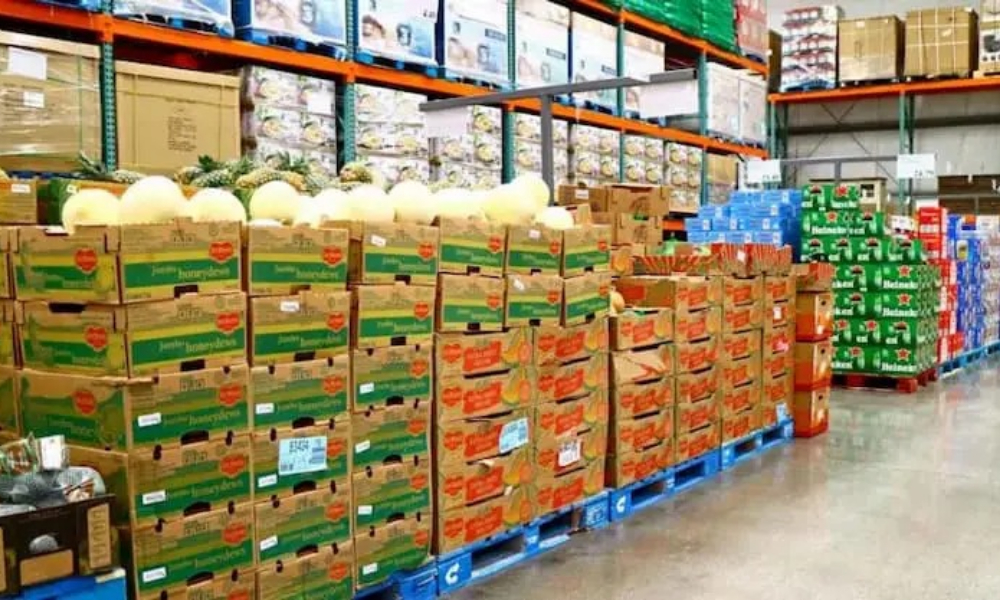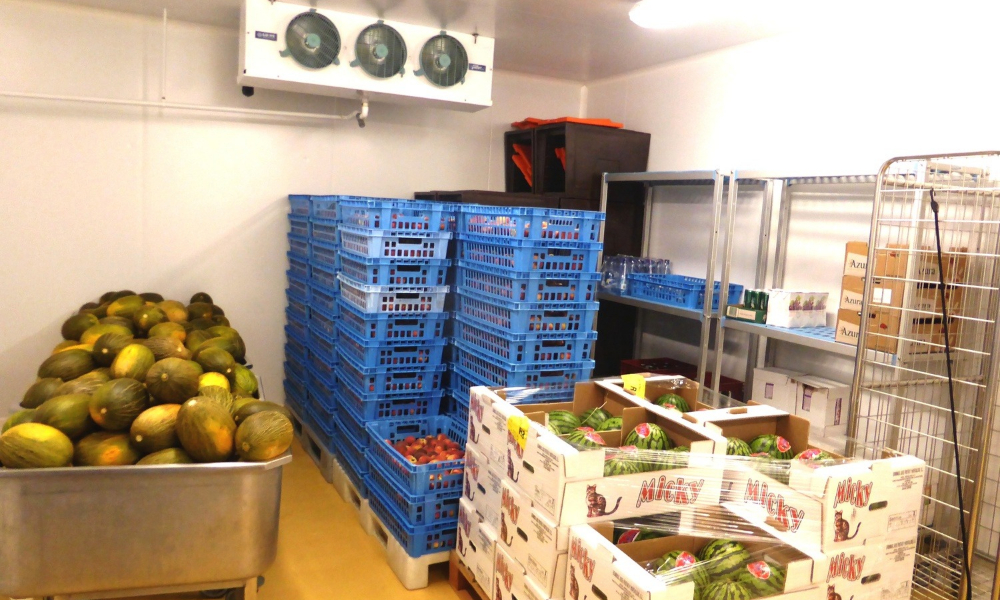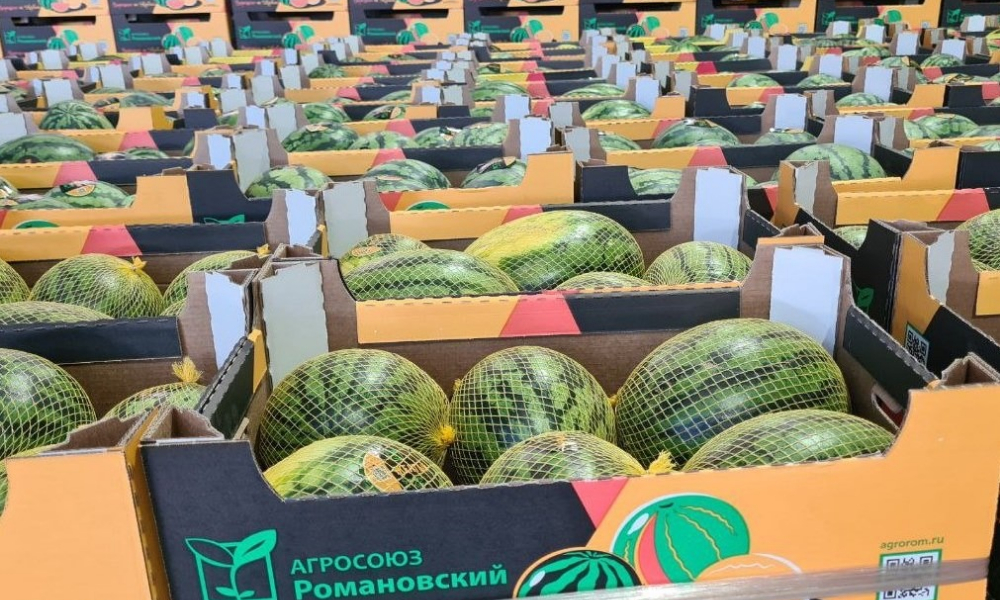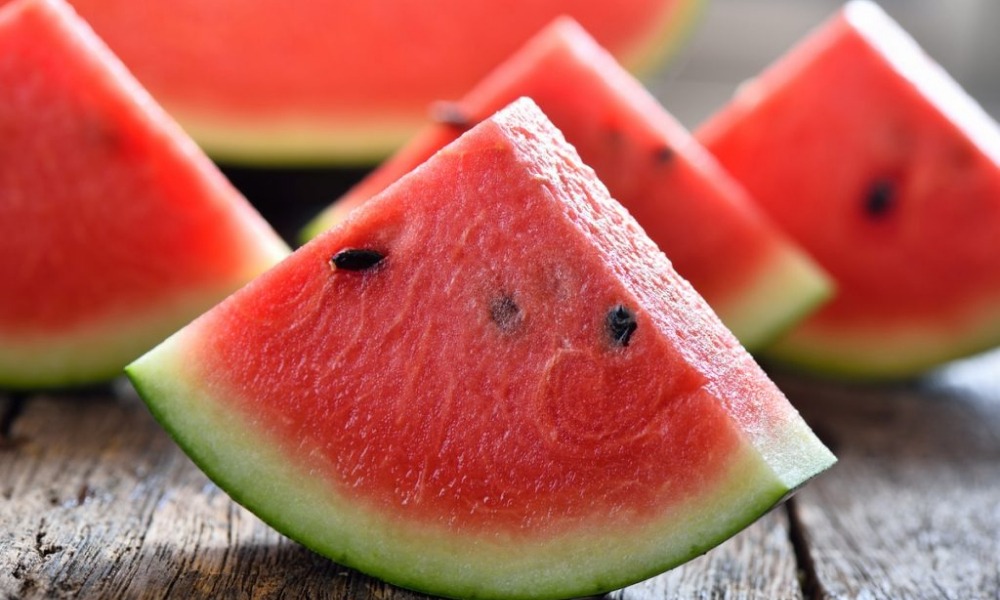Specific Conditions for Watermelon Cold Storage
Storing watermelon and other agricultural products under optimal conditions is essential to maintain quality and extend their shelf life. Cold storage plays a crucial role in ensuring watermelon quality from farm to market. This article provides an in-depth review of the conditions for storing watermelon in cold storage and its impact on product quality preservation.
Ideal Conditions for Storing Watermelon in Cold Storage
Temperature The suitable temperature range for storing watermelons is 10 to 15 degrees Celsius. This can be examined from several scientific perspectives, including agricultural engineering, biological engineering, microbiology, and chemical engineering.
1.Agricultural Engineering Storing watermelon at unsuitable temperatures can cause various quality issues, including taste, flavor, and health problems.
Storing below the recommended range can cause freezing, white spots, unpleasant odors, color changes, loss of taste and texture, and a watery, soft flesh. Conversely, higher temperatures can increase respiration rates, leading to faster spoilage, higher waste, flavor changes, wrinkling, and loss of product appeal.
2.Biology and Microorganisms Watermelon is a living entity and, like any living organism, it breathes. During respiration, watermelon consumes oxygen and releases carbon dioxide and heat. The respiration rate of watermelon depends on the surrounding temperature and decreases at lower temperatures. Reduced respiration leads to less oxygen consumption, carbon dioxide production, and heat release, helping to maintain the quality, taste, and health of the watermelon for a longer period.
The growth of microbes and fungi that cause disease and spoilage is significantly reduced at lower temperatures.
3.Chemical Engineering Lower temperatures and reduced chemical reaction rates help slow the breakdown of nutrients, prevent color changes in the flesh, and maintain flavor. For example, the activity of the enzyme pectin esterase, which causes excessive softening of watermelon, is reduced at lower temperatures.
Humidity The optimal relative humidity for storing watermelon in cold storage is between 90% and 95%. Watermelon consists of about 92% water, and lower cold storage temperatures reduce water evaporation from the fruit. However, if relative humidity is too low, watermelon can still lose moisture, wrinkle, lose weight, flavor, and become overly soft.
1.Microbiology Watermelon can spoil due to various factors, including bacteria, fungi, and yeasts. These microorganisms grow and multiply rapidly in warm, humid conditions, breaking down the fruit's tissues and creating unpleasant tastes and odors.
Bacteria: Low temperatures significantly reduce the growth rate of harmful bacteria. Common bacteria causing watermelon spoilage include Clostridium, Escherichia coli, and Salmonella, which can be transferred through soil, contaminated water, or animal contact, causing soft rot, brown or black spots, sour smells, and unpleasant flavors.
Fungi: Fungi require various enzymes for growth and reproduction. Cold temperatures reduce enzyme activity, preventing fungal growth. Fungi can be transferred through air, soil, or plant debris.
Yeasts: Yeasts naturally found on watermelon skin can ferment sugars, producing alcoholic tastes and odors and causing flesh discoloration.
1.Food Engineering and Packaging Storing watermelon in cold storage involves principles and methods for maintaining quality, taste, health, and longevity during storage and transport.
Packaging Choice: Various packaging methods, including cardboard boxes and plastic baskets, can be used.
Packaging Features: Packaging should protect the product from mechanical damage like impacts and pressure while allowing air circulation to prevent moisture accumulation and microbial growth. Packaging materials should be environmentally friendly and easily recyclable.
Ventilation and Ethylene Control or Monitoring Watermelon produces small amounts of ethylene, a plant hormone crucial for fruit ripening. Watermelon is classified as a non-climacteric fruit, meaning it does not produce much ethylene but should not be exposed to ethylene from other fruits and vegetables like apples, bananas, and tomatoes. Exposure to ethylene can accelerate watermelon ripening, causing excessive softening, tissue discoloration, and flavor loss. Therefore, storing watermelon away from ethylene-producing fruits and vegetables is essential.
Proper Ventilation Strategies in Watermelon Cold Storage
Using Air Conditioning Systems: Proper ventilation is crucial for maintaining the quality, taste, health, and longevity of watermelon during storage and transport.
- Installing Ventilation Vents: Proper placement of ventilation vents in watermelon cold storage ensures uniform air distribution, maintains constant temperature and relative humidity, and removes heat, moisture, and ethylene. No dead spots should exist where air can stagnate. Air intake vents should be located at the bottom, and exhaust vents at the top of the cold storage.
- Proper Packaging Arrangement: There should be enough space between packages to allow free air circulation. The weight of the packages should be evenly distributed to prevent excessive pressure on the lower packages.
- Ethylene Control or Monitoring: Proper ventilation is essential for ethylene removal from cold storage. Various ethylene absorbents, such as potassium permanganate, silica gel, and activated carbon, should be regularly replaced for effectiveness.
The type of watermelon affects ethylene production, as noted below:
Low Ethylene Producing Watermelons: Notable varieties include Crimson Sweet, Jubilee, and Jubilee King, suitable for long-term storage.
Medium Ethylene Producing Watermelons: Notable varieties include Succulent, Red Surprise, and Solar Fire, suitable for medium-term storage.
High Ethylene Producing Watermelons: Notable varieties include Charleston Gray, Sugar Baby, and Jubilee Jim, suitable for short-term storage.
Design and Technology of Modern Cold Storage for Watermelon
In addition to traditional methods of controlling or monitoring temperature, humidity, and proper ventilation, various modern techniques have been developed to maintain watermelon quality during storage.
Atmospheric Control or Monitoring A sophisticated method for watermelon storage that adjusts the gas composition in cold storage to maintain quality, taste, health, and longevity during storage and transport.
Anti-Ethylene Coatings Using anti-ethylene coatings with other appropriate storage methods, such as pre-cooling, proper packaging, and ventilation, helps maintain watermelon quality for longer and offers consumers higher-quality products.
Monitoring and Control Systems These systems use sensors, software, and RFID tags to collect and analyze data on cold storage environmental conditions like temperature, humidity, ethylene levels, and other critical parameters.
Using Modern Technologies Like Nanotechnology Nano-packaging can control gas permeability and inhibit microbial growth, while nano-coatings can be applied to watermelon surfaces to protect against rot and damage.
Benefits of Watermelon Cold Storage
- Increased Shelf Life Cold storage provides a constant temperature and suitable humidity for watermelons, delaying ripening and extending their shelf life, crucial for watermelons intended for future consumption or transport.
- Control or Monitor Ripening Time By adjusting cold storage temperatures, the ripening speed can be controlled, aiding in the distribution of watermelons throughout the season and their timely market availability.
- Cost Savings and Waste Reduction Storing watermelon in cold storage can reduce costs in various ways for different stakeholders in the supply chain, benefiting farmers, retailers, transporters, and consumers.
Technical Specifications and Important Notes for Watermelon Cold Storage
Temperature and Humidity Control or Monitoring The main technical specifications include advanced systems for controlling or monitoring temperature and humidity. The optimal temperature is between 10 and 15 degrees Celsius, and relative humidity between 90% and 95% should be maintained to prevent premature ripening and spoilage.
Ventilation and Ethylene Control or Monitoring Systems Proper ventilation prevents the accumulation of ethylene and other gases that can cause ripening and spoilage. Some cold storages are equipped with ethylene absorption technologies to capture and prevent the recirculation of excess gases.
Security and Hygiene Cold storage should be clean and free of pests and contamination. Good hygiene prevents the growth of microorganisms that can cause watermelon rot.
Separation Watermelons should be stored separately from other fruits and vegetables that may produce ethylene gas, which can cause premature ripening and spoilage.
Modern cold storages with advanced technology and design tailored to the needs of agricultural products like watermelon provide optimal storage conditions. Using these technologies helps producers offer high-quality products to the market, ultimately leading to increased profitability and reduced costs





